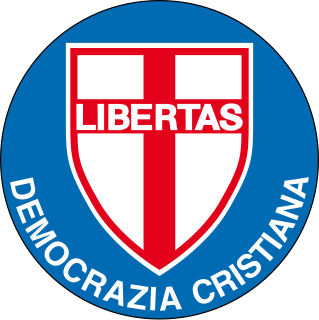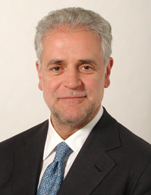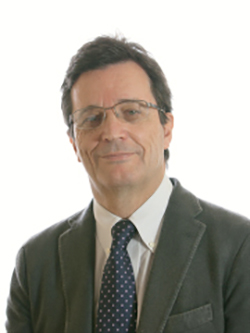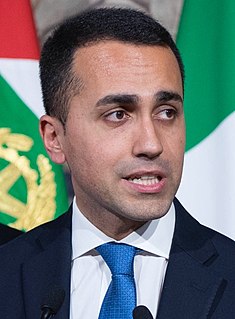 |
|---|
| This article is part of a series on the politics and government of Lombardy |
|
The Lombard regional election of 1985 took place on 12 May 1985. The 4th term of the Regional Council was chosen.
 |
|---|
| This article is part of a series on the politics and government of Lombardy |
|
The Lombard regional election of 1985 took place on 12 May 1985. The 4th term of the Regional Council was chosen.
Election was held under proportional representation with provincial constituencies where the largest remainder method with a Droop quota was used. To ensure more proportionality, remained votes and seats were transferred at regional level and calculated at-large.
Proportional representation (PR) characterizes electoral systems in which divisions in an electorate are reflected proportionately in the elected body. If n% of the electorate support a particular political party, then roughly n% of seats will be won by that party. The essence of such systems is that all votes contribute to the result - not just a plurality, or a bare majority. The most prevalent forms of proportional representation all require the use of multiple-member voting districts, as it is not possible to fill a single seat in a proportional manner. In fact, the implementations of PR that achieve the highest levels of proportionality tend to include districts with large numbers of seats.
The largest remainder method is one way of allocating seats proportionally for representative assemblies with party list voting systems. It contrasts with various divisor methods.
The Droop quota is the quota most commonly used in elections held under the single transferable vote (STV) system. It is also sometimes used in elections held under the largest remainder method of party-list proportional representation. In an STV election the quota is the minimum number of votes a candidate must receive in order to be elected. Any votes a candidate receives above the quota are transferred to another candidate. The Droop quota was devised in 1868 by the English lawyer and mathematician Henry Richmond Droop (1831–1884) as a replacement for the earlier Hare quota.
The Christian Democracy party was by far the largest party, despite a slight decline in term of votes. After the election Giuseppe Guzzetti was re-elected president for the third time at the head of a center-left coalition comprising also the PSI, the PSDI and the PRI. In 1986 Guzzetti was replaced by Bruno Tabacci, to whom Giuseppe Giovenzana succeeded in 1989.

Christian Democracy was a Christian democratic political party in Italy.

The Italian Socialist Party was a socialist and later social-democratic political party in Italy. Founded in Genoa in 1892, the PSI dominated the Italian left until after World War II, when it was eclipsed in status by the Italian Communist Party. The Socialists came to special prominence in the 1980s, when their leader Bettino Craxi, who had severed the residual ties with the Soviet Union and re-branded the party as liberal-socialist, served as Prime Minister (1983–1987). The PSI was disbanded in 1994 as a result of the Tangentopoli scandals. Prior to World War I, future dictator Benito Mussolini was a member of the PSI.

The Italian Democratic Socialist Party was a minor social-democratic political party in Italy. The PSDI, before the 1990s decline in votes and members, had been an important force in Italian politics, being the longest serving partner in government for Christian Democracy. The party's founder and longstanding leader was Giuseppe Saragat, who served as President of the Italian Republic from 1964 to 1971.
Summary of the 12 May 1985 Lombard regional election
 | |||||||
| Party | Votes | % | +/− | Seats | +/− | ||
|---|---|---|---|---|---|---|---|
| Christian Democracy | DC | 2,204,685 | 36.03 | 31 | |||
| Italian Communist Party | PCI | 1,632,676 | 26.68 | 22 | |||
| Italian Socialist Party | PSI | 941,395 | 15.38 | 12 | |||
| Italian Social Movement | MSI | 363,918 | 5.95 | 4 | |||
| Italian Republican Party | PRI | 293,359 | 4.79 | 4 | |||
| Italian Democratic Socialist Party | PSDI | 170,763 | 2.79 | 2 | |||
| Green Lists | LV | 146,835 | 2.40 | 2 | |||
| Italian Liberal Party | PLI | 143,641 | 2.35 | 1 | |||
| Proletarian Democracy | DP | 136,781 | 2.24 | 2 | |||
| National Pensioners' Party | PNP | 32,945 | 0.54 | 0 | |||
| Lega Lombarda | LL | 28,074 | 0.46 | 0 | |||
| Democratic Party | PD | 15,475 | 0.25 | 0 | |||
| Humanist Party | PU | 4,448 | 0.07 | 0 | |||
| National Monarchist Party | PMN | 4,352 | 0.07 | 0 | |||
| Total valid votes | 6,119,347 | 80 | |||||
| Blank votes | 185,726 | ||||||
| Invalid votes (blank included) | 331,013 | ||||||
| Total | 6,450,360 | ||||||
| Registered voters & turnout | 6,950,380 | 92.81 | |||||
Source: Ministry of the Interior
The additional member system (AMS), also known as mixed-member proportional representation (MMP) outside the United Kingdom, is a mixed electoral system with one tier of single-member district representatives, and another tier of ‘additional members’ elected to make the overall election results more proportional.
The D'Hondt method or the Jefferson method is a highest averages method for allocating seats, and is thus a type of party-list proportional representation. The method described is named in the United States after Thomas Jefferson, who introduced the method for proportional allocation of seats in the United States House of Representatives in 1791, and in Europe after Belgian mathematician Victor D'Hondt, who described it in 1878 for proportional allocation of parliamentary seats to the parties. There are two forms: closed list and an open list.

There are four types of elections in Spain: general elections, elections to the legislatures of the autonomous communities, local elections and elections to the European Parliament. General elections and elections to the legislatures of the autonomous communities are called after the mandate of the national or regional legislature expires, usually four years after the last election, although early elections may occur. Elections to local councils and to the European Parliament are held on fixed dates. For most elections party list PR is used, but the plurality system is used for the Senate.

Bulgaria elects on national level a head of state - the president - and a legislature. The president is elected for a five-year term directly by the people. The National Assembly has 240 members, elected for a four-year term by proportional representation in multi-seat constituencies with a 4% threshold. Bulgaria has a multi-party system, in which no one party often has a chance of gaining power alone, and parties must work with each to form governments.

Parliamentary elections were held in Hungary on 9 April 2006, with a second round of voting in 110 of the 176 single-member constituencies on 23 April. The Hungarian Socialist Party emerged as the largest party in the National Assembly with 186 of the 386 seats, and continued the coalition government with the Alliance of Free Democrats. It marked the first time a government had been re-elected since the end of Communist rule.

The Politics of Abruzzo, Italy takes place in a framework of a presidential representative democracy, whereby the President of Regional Government is the head of government, and of a pluriform multi-party system. Executive power is exercised by the Regional Government. Legislative power is vested in both the government and the Regional Council.

The Politics of Campania, Italy takes place in a framework of a presidential representative democracy, whereby the President of Regional Government is the head of government, and of a pluriform multi-party system. Executive power is exercised by the Regional Government. Legislative power is vested in both the government and the Regional Council.

The Lombard regional election of 2005 took place on 3–4 April 2005. The 8th term of the Regional Council was chosen. Roberto Formigoni was re-elected for the third time in a row President, defeating Riccardo Sarfatti.

The Lombard regional election of 2000 took place on 16 April 2000. The 7th term of the Regional Council was chosen.

The Lombard regional election of 1990 took place on 6 May 1990. The 5th term of the Regional Council was chosen.

The Lombard regional election of 1980 took place on 8 June 1980. The 3rd term of the Regional Council was chosen.

The Lombard regional election of 1975 took place on 15 June 1975. The 2nd term of the Regional Council was chosen.

The Sardinian regional election of 1994 took place on 12 and 26 June 1994.

The Tuscan regional election of 2000 took place on 16 April 2000.

Tuscan regional election of 1985 took place on 12 May 1985.

The Sicilian regional election of 1947 took place on 20 April 1947. They were the first-ever election of the Sicilian Parliament.

The Sardinian regional election of 2009 took place on 15–16 February 2009.

The Tuscan regional election of 2010 took place on 28–29 March 2010.

The Italian regional elections of 1985 were held on May 12. The fifteen ordinary regions, created in 1970, elected their fourth assemblies.

The next Italian general election is due to be held no later than 28 May 2023.